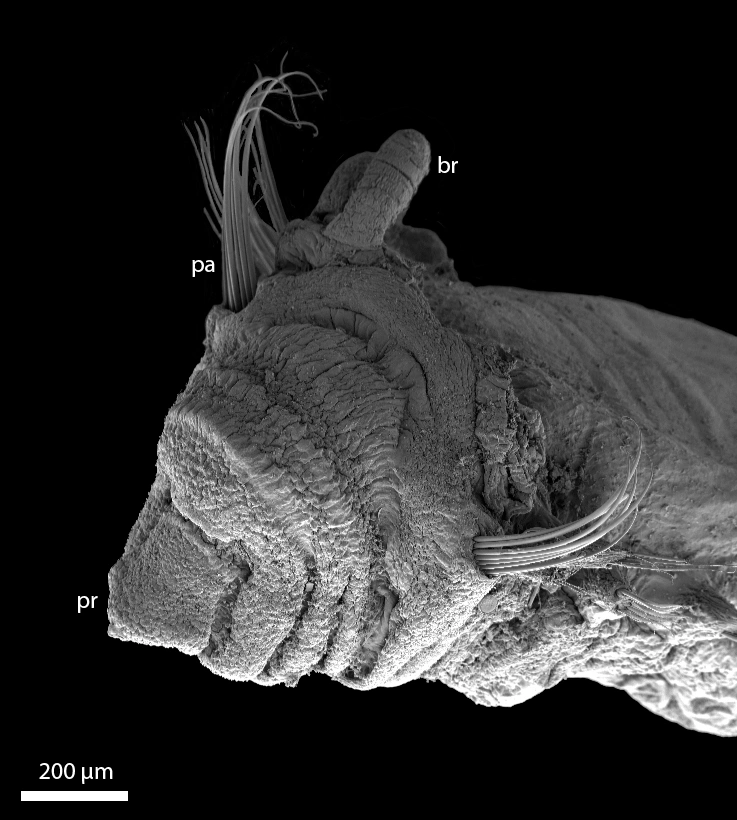Ampharete baltica
Ampharete baltica can be up to 18 mm long. It can be found along the entire Norwegian coast and Svalbard at depths between 5 and 77 meters.
Type locality
Baltic Sea, south of Torhamn, 55°50´N 16°05´E, 61 m.
Key characters
Ampharete baltica. Anterior end. br: branchiae, pa: paleae, pr: prostomium.
Ampharete baltica. Posterior end. lc: lateral cirrus, nrp: neuropodium, p: pygidial papillae.
Measurements: Up to 18 mm long.
Number of thoracic chaetigers, excluding paleae: 14
Number of thoracic uncinigers: 12
Number of abdominal uncinigers: 12
Prostomium: Trilobed; one pair of eyespots.
Mouth tentacles: Papillose.
Branchiae: Four pairs of branchiae in two groups separated by distance equal to about one branchial base diameter; three branchiae in each group in transverse row, fourth branchia behind the middle one of the three; branchial bases on each side fused.
Paleae: Long with filiform tips, 6–10 chaetae on each side.
Special features: None.
Pygidium: With two long lateral cirri and several long cirriform papillae.
Tube: Thin layer of organic secretion incrusted with a layer of mud.
Distribution
Entire Norwegian coast and Svalbard; 5–77 m (Holthe 1986a).
Similar species
Ampharete baltica is very similar to Ampharete lindstroemi. The shape of the pygidial papillae, long cirriform in the former or short rounded in the latter, is the only good character to differentiate these two species, which make specimens without pygidium very hard to identify correctly.
Sources
Holthe T (1986a). Polychaeta Terebellomorpha. Marine Invertebrates of Scandinavia 7: 1-192.
Personal observations, Alvestad T.
Siden siteres som:
Alvestad T og Budaeva N (2020). Ampharete baltica Eliason, 1955. www.artsdatabanken.no/Pages/299294. Nedlastet <dag/måned/år>



